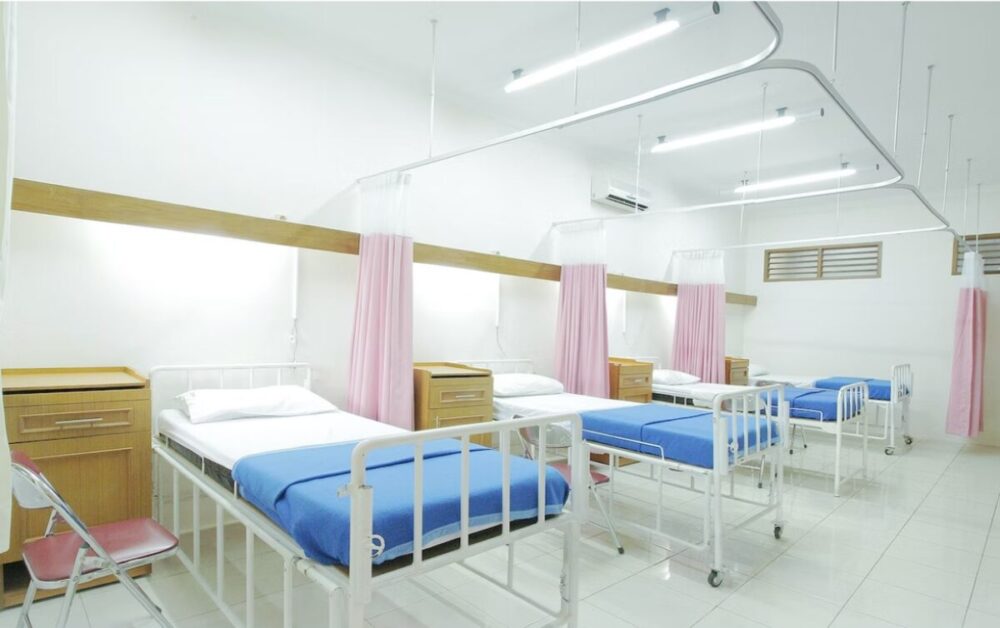As a medical professional, it is your responsibility to protect the privacy of your patients. In today’s digital world, this means taking extra precautions to ensure that patient data remains protected and secure. From training staff on proper security protocols to implementing new technology solutions, there are numerous steps you can take to ensure patient privacy if you’re running a medical practice. So, here are some of the necessary measures and how they can help keep patient information safe from unauthorized access or misuse.
1. Ensuring Physical Privacy
This means making sure that confidential patient data is not accessible to the public or other unauthorized individuals. This can be accomplished by ensuring that your office layout and physical security systems protect against potential breaches. Secure filing cabinets, closed doors, and restricted access are just a few of the measures that can be taken to safeguard the privacy of patients. You can also find businesses supplying hospital privacy curtains that can be used to provide an additional layer of security. These curtains are especially important in areas where confidential patient data is present.
2. Training Staff on Proper Security Protocols

It’s important to make sure that your staff members are thoroughly trained in the necessary security protocols and best practices. This includes having them sign a confidentiality agreement, teaching them how to properly handle confidential data, and providing cyber-security awareness training. Additionally, you should have policies in place regarding the use of mobile devices, email systems, and other technologies that could potentially impact patient privacy. For example, you may choose to limit access to patient data on mobile devices or require the use of passwords for email accounts. To implement training effectively, consider following these four steps:
- Identify the areas that need training. Make sure to include topics such as data security and privacy, use of technology, and handling of confidential information.
- Establish a timeline for when training should take place. This will help ensure that your staff members are up-to-date on their knowledge and skills.
- Develop a plan for effectively delivering the training content. You can do this by opting for lectures, interactive sessions, or other forms of instruction.
- Assess whether employees have understood all the material correctly through quizzes, tests, or other methods. Doing so will help you identify any gaps in knowledge and address them accordingly.
3. Implementing Technology Solutions
Today, there are a variety of technology solutions that can help protect patient privacy. This includes encrypting data, using secure servers and networks, and deploying two-factor authentication protocols when accessing confidential information. You should also look into utilizing cloud-based storage solutions, as this can provide an additional layer of protection against potential data breaches. Additionally, you may want to consider implementing a “Bring Your Device” (BYOD) policy, where staff is required to use their own devices when accessing patient information.
Internet of Things
An important component of protecting patient privacy is understanding how “Internet of Things” (IoT) devices can impact your organization. Many healthcare facilities are utilizing IoT-enabled medical instruments, such as heart monitors and glucose readers, that collect valuable data. If a hacker were to gain access to these devices, they could potentially compromise the security of confidential records. To prevent this from happening, you need to make sure that all of your devices are properly secured with encryption and other security protocols.
4. Maintaining Compliance with Laws & Regulations

As a medical professional, you must remain up-to-date on the latest laws and regulations to ensure compliance. This includes federal and state legislation regarding patient privacy, such as the Health Insurance Portability and Accountability Act (HIPAA). HIPAA ensures that all healthcare providers maintain the necessary measures for protecting sensitive health information from unauthorized access or misuse. Additionally, healthcare providers use the HIPAA form to obtain patient consent, allowing authorized personnel like doctors or nurses to use the patient’s medical information for further advanced treatment. Some states also have additional regulations that must be followed. For example, in California, healthcare providers are required to report any suspected cases of child abuse or neglect. It’s important to stay informed and up-to-date on the latest laws and regulations to ensure compliance.
- Additionally, you should always be aware of any changes or updates to existing laws and regulations, as well as any new laws that may affect your practice. Some states may require continuing education courses or certifications for certain specialties – make sure you meet all requirements in order to stay compliant and maintain your license. By being diligent in maintaining compliance with applicable laws and regulations, you can help protect yourself and your patients from potential legal issues down the road.
5. Security Solutions
Securing your patients in the hospital or at home with security solutions is an important element of protecting patient privacy. You should consider using a variety of security solutions, including strong passwords and two-factor authentication protocols for all sensitive information. Additionally, you may want to implement robust access control systems, such as biometrics or RFID cards, to limit access to private areas within your facility. Finally, be sure to deploy appropriate firewalls and other measures to protect your network from potential cyberattacks. By implementing the right security solutions and taking a proactive approach, you can ensure that patient records remain confidential and protected against unauthorized access or misuse.
6. Monitor for Potential Threats

Finally, it’s important to monitor for potential threats before they become an issue. By regularly assessing vulnerabilities and staying up-to-date on the latest security threats, you can better defend your organization against potential cyberattacks. Additionally, it’s important to provide training to staff members, so they are aware of the steps they need to take to maintain patient confidentiality. For example, you should educate them on the importance of using secure networks, avoiding suspicious emails and links, and utilizing strict access control procedures. Ultimately, protecting patient privacy requires a layered approach to security.
By taking the necessary steps to protect patient privacy, you can rest assured that confidential data remains secure. The measures outlined in this article are essential for running a successful medical practice and keeping patients safe from potential breaches. With these tips and best practices in place, you can ensure that your practice stays compliant with all laws and regulations while creating a safe environment for your patients.





